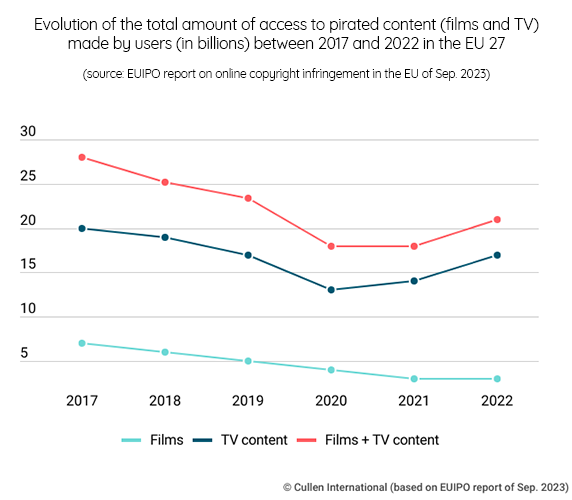Cullen International has just published a new benchmark showing in thirteen selected countries if there are specific procedures (beyond court decisions) on dynamic blocking injunctions and the type(s) of authority involved in the process.
Dynamic blocking injunctions are used to put an end to repeated online piracy infringements (that often occur immediately after issuing an injunction), and therefore enhance the effectiveness of the measures to fight online piracy. They allow new internet locations to be covered without the need for a new procedure to obtain another injunction.
The benchmark shows that in nine out of the thirteen countries surveyed, dynamic injunctions are used to fight online piracy. Belgium, France, Italy and Spain have special procedures in place where administrative authorities (and sometimes independent regulatory authorities) are involved.
According to a report of the EU Intellectual Property Office, piracy (for films and television content) is on the rise again since the end of 2020, after having slightly fallen during the COVID-19 pandemic.

For more information and access to the benchmark, please click on “Access the full content” - or on “Request Access”, in case you are not subscribed to our European Media service.
more news
01 December 25
Lithuanian regulator plans local regulatory holidays in the wholesale local access market
FREE download for ALL of our latest analysis!
01 December 25
Cullen Explainer: Satellite direct-to-device services
Our new Explainer provides an overview of the technical background of satellite direct-to-device (D2D) and the operators providing or preparing such services.
28 November 25
Global trends in countering online scams in 2025
Our latest Global Trends report highlights that several jurisdictions around the world adopted or proposed in 2025 new legislation and policies aimed at countering online scams. The focus of those initiatives regarded various aspects, ranging from prevention and enforcement aspects to mechanisms to compensate scam victims.